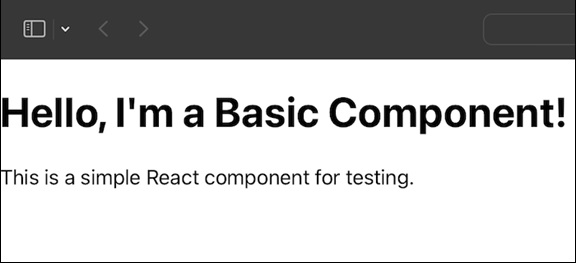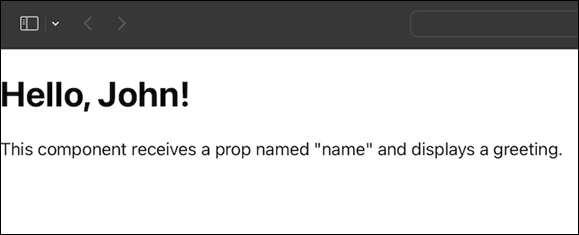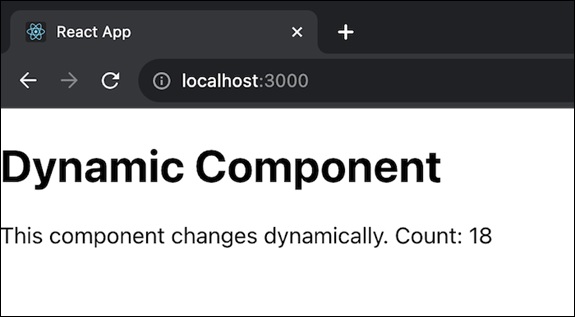React 测试对于确保我们的组件按预期运行非常重要。因此,我们将查看 TestRenderer.act() 函数,这是一个使测试更容易的有用工具。
TestRenderer.act() 是“react-test-renderer”库中可用的函数。这种方法允许我们为断言准备一个 React 组件。它类似于 'react-dom/test-utils' 中的 act() 助手,它使测试 TestRenderer 组件变得容易。
语法
首先,我们必须导入必要的函数 -
让我们考虑一个例子,其中我们有一个名为 App 的组件,它获取一个名为 value 的属性 -
在此代码中,我们创建一个 App 组件的实例,其 prop 的值等于 1。act() 方法包装了此创建过程,以确保组件已准备好进行测试。
现在,我们将使用不同的属性更新组件 -
再次使用 act() 时,我们可以使用新的 props 安全地更新组件,并在更新的组件上做出断言。
例子
让我们通过使用 TestRenderer.act(callback) 函数创建小型 React 应用程序来使用这些信息。我们将展示此功能如何在许多测试场景中发挥作用。
示例 - 基本组件
在第一个应用程序中,我们将检查一件简单的事情 - 我们称为“BasicComponent”的 React 程序的基本部分。这就像我们项目的一小块。这部分不需要任何额外的信息。我们想看看当我们在屏幕上显示它时它是否看起来正确。我们检查的方法是创建它并确保它看起来就像我们预期的那样。
BasicComponent.js
App.js
输出

在此示例中,BasicComponent 是一个基本的 React 功能组件,它创建一个带有 h1 标题和 p 段落的 div。此组件用于测试,其输出将与测试代码中的快照进行比较。
示例 - 带有 Props 的组件
第二个应用用于测试一个名为 ComponentWithProps 的 React 组件,该组件获取一个值为“John”的名称属性。此示例演示如何使用 TestRenderer.act() 创建具有特定功能的组件实例,并确认渲染结果与所需的快照匹配。
ComponentWithProps.js
App.js
输出

在上面的代码中,ComponentWithProps 是另一个简单的功能组件,它接收一个名为 name 的道具。此属性用于创建显示在 h1 标题中的问候语。该段落还对这一组成部分作了简要说明。
示例 - 动态组件
在这个程序中,我们将展示如何测试一个名为 DynamicComponent 的动态 React 组件。此组件的生命周期将包括状态更新或属性更改等更改。该测试使用设置组件并通过更新组件来重新创建动态更改。这显示了 TestRenderer.act() 如何处理动态组件行为。
DynamicComponent.js
App.js
输出

在此示例中,DynamicComponent 是一个使用 useState 和 useEffect 钩子的功能组件。它使用 setInterval 启动计时器,在初始化计数状态后每秒增加计数。这表示组件随时间推移的动态变化。
此外,上面的示例展示了如何使用 TestRenderer.act() 来测试各种类型的 React 组件。通过遵循这些模式,我们可以简化我们的测试过程,并确保我们的 React 应用程序的可靠性。
注意
在使用 react-test-renderer 时,使用 TestRenderer.act() 非常重要,以确保与 React 的内部行为兼容,并纠正和可靠的测试结果。
总结
TestRenderer.act() 是 react-test-renderer 库中可用的一个函数。它的主要目的是帮助测试 React 组件。它确保我们的测试以与 React 更新用户界面的方式非常相似的方式执行。因此,我们已经了解了它是如何工作的,以及如何在不同场景中使用此功能。



